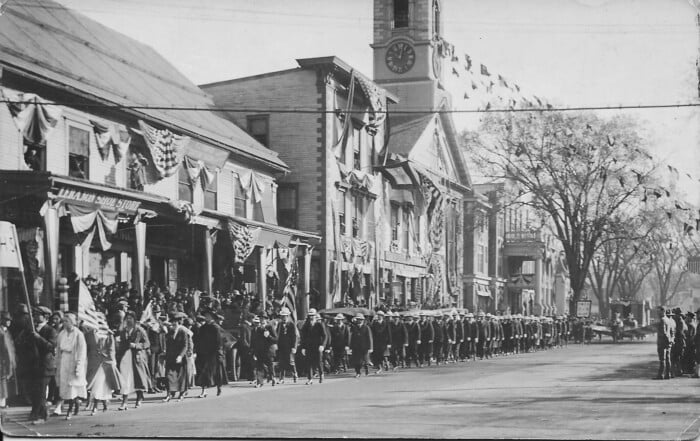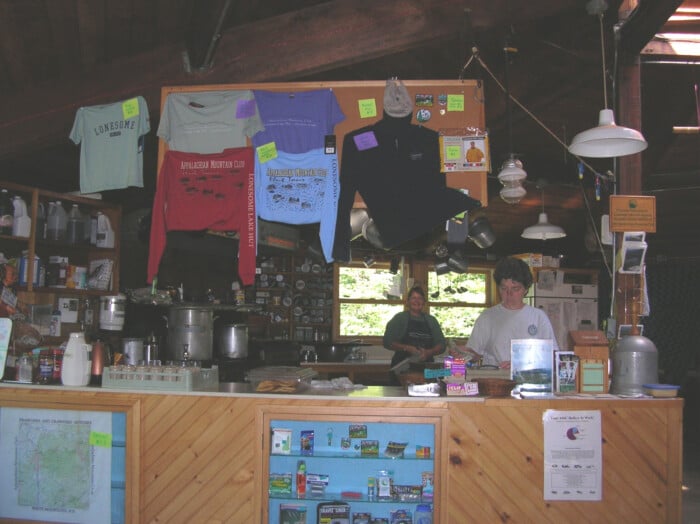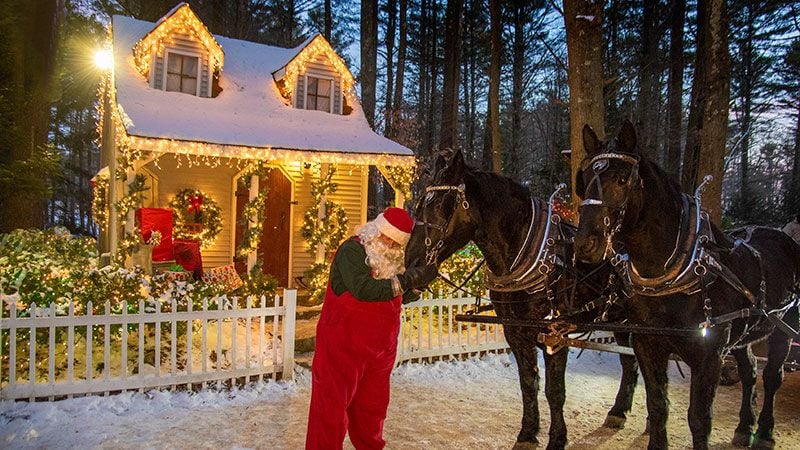WDYK: Pondering a Mystery at Gunstock
Marshall Hudson explores the history of the famed Gilford ski resort, and how it took grit — and ingenuity — to complete

I’m at Gunstock Mountain Resort in Gilford, riding the chairlift to the top of the mountain to read a soil profile test pit. Ski season hasn’t started yet, so I’m all alone on this four-seater chairlift and mostly alone on the mountaintop.
I’m up here to look at a hole in the ground, but instead find myself gazing down the mountain and out across Lake Winnipesaukee at all the islands colored in autumn glory. The view is outstanding and the soil profile interesting, but the steel towers holding up the cables my chair ride is suspended from have captured my attention.
There are ladders welded to the sides of these towers, presumably for maintenance and repairs at the top. Counting the number of ladder rungs, I’m able to guesstimate the tower is about 30 feet tall. Others are shorter or taller depending on where in the undulating terrain they are positioned. Looking down beyond my dangling feet, it seems a lot farther to the ground than just 30 feet.
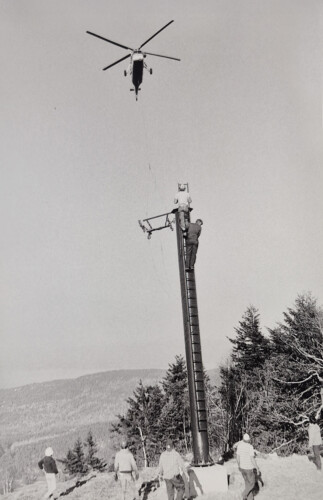
Laborers in the 1980s atop a 30-foot tower wait for a helicopter to fly in the next part for assembly. Courtesy of Gunstock Mountain Resort
The snowless terrain beneath me is steep and rugged with jagged ledge and jumbled fractured boulders. There is no way a concrete truck drove up here to pour the concrete foundations that anchor the towers to the side of the mountain. Yet I’m looking at poured concrete foundations. How they did that is a mystery to me.
However it was done, the concrete then had to cure, and somehow the towers were dragged up the mountainside and stood up on these new foundations. Cables were strung across the top of the towers and threaded through pulleys. Trolleys that ride on the cables then had to be raised and installed. I’m wondering how any of this could be done on the slopes of this mountain.
Facilities Operations Director Patrick McGonagle was able to answer my questions and shared with me some old photos from archive files. I learned that Gunstock Mountain Resort, or “Belknap Mountain Recreation Area” as it was originally known, is a product of the Great Depression.
To address the rampant unemployment of the 1930s, President Franklin D. Roosevelt created the Works Progress Administration (WPA), which provided jobs for the unemployed, putting them to work building infrastructure and other public projects.
The Gunstock initiative started in 1935 when a group of local ski enthusiasts cut a network of cross-country ski trails in the Belknap Mountains. The group identified one of the slopes as the perfect spot for a ski jump, so they approached the Belknap County commissioners and applied for funding from the Federal Emergency Relief Administration (FERA) for construction of their proposed ski jump. The parties estimated their project would put several hundred men to work and requested $1,000 “for the purposes of unemployment relief.” The application was approved.
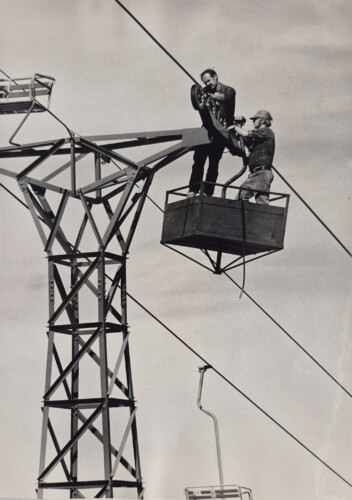
It took nerve to install chair seats to cables in this 1960s operation. Courtesy of Gunstock Mountain Resort
It wasn’t long before the single ski jump idea snowballed into a much bigger project, and the FERA transitioned it to the WPA. The revised proposal included a new road from Gilford and Alton to the site, 5 miles of ski trails, a rope tow, 12 shelters with fireplaces, an observation tower, a 2,000-foot slalom course, a 20-acre parking lot, a spring house and water system, a comfort station and 8,500 feet of access roads, including four bridges. All of the projects were approved, and a crew of 300 WPA men started work.
By fall of 1936, the project developers had also conceived the need for a lodge recreation building. Designed to have a mountain “rustic” look, it included a Swiss balcony on all four sides, exposed king trusses, wagon wheel chandeliers, knotty pine walls, a granite fireplace, diagonally laid maple flooring and a bank of French doors.
As the lodge was being constructed, the hurricane of 1938 blasted through the area, toppling large-diameter old-growth trees. Many of the downed trees were salvaged and provided beams and lumber for the building. Stone for the fireplaces, foundations and chimneys was quarried nearby. Rustic wood siding was milled from trees cut on site. Ironwork hardware was fashioned in a blacksmith shop, also on site.
By 1937, the average number of men working on the project was 70 “County men” and about 35 men from “the City.” Archive photos show an army of men in bib overalls and funny hats wielding shovels, pushing wheelbarrows and laying rock for the lodge.
To bring skiers up the mountain, a series of rope tows and chairlifts were constructed in the mid-1930s. Rope tows quickly caught on and continued to be popular even after the invention of other lifts. The tows were typically little more than a heavy rope on a guide that was propelled by a gasoline engine at the base of the hill. By the early 1960s, the rope tows could no longer handle the demand and expansion was needed, so several new chairlift systems were installed.

A summit lift tower that was erected circa 1962 used ropes, a homemade bi-pod and a lot of determination. Courtesy of Gunstock Mountain Resort
Photos taken during this construction period show helicopters flying up the mountain with dangling buckets of concrete to be poured into the waiting forms. Other old photos show steel towers suspended at the end of a cable beneath a helicopter, being flown up the mountain. Men with a lot of nerve, but without safety harnesses, are balanced on top of the towers and hooking or unhooking the towers from the hovering helicopter above.
Many of the chairlifts installed in the 1960s have now been replaced with more modern and sophisticated models. In 1986, Gunstock launched an expansion program that included replacement of four older lifts. In 2003, the Panorama high-speed quad was constructed, which brings skiers to the top quickly and avoids long waiting lines at the bottom. In the summer, this lift brings people to the top for zipline tours, aerial treetop challenge courses, a mountain coaster and scenic rides for those just wanting to appreciate the spectacular views from the summit.
I’ve seen the hole in the ground I came up here for, so I’m now ready to ride the chairlift back to the parking lot. On the way down, I’ll appreciate not only the spectacular views but also the efforts of the men with nerves of steel, who constructed the chairlift using helicopters. Mystery solved.

